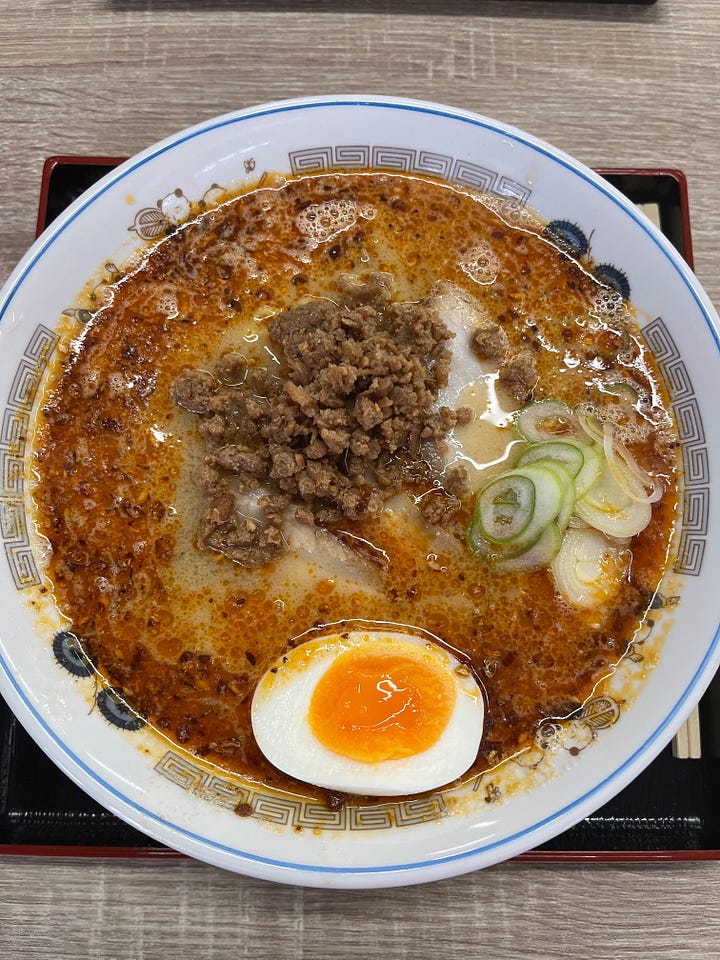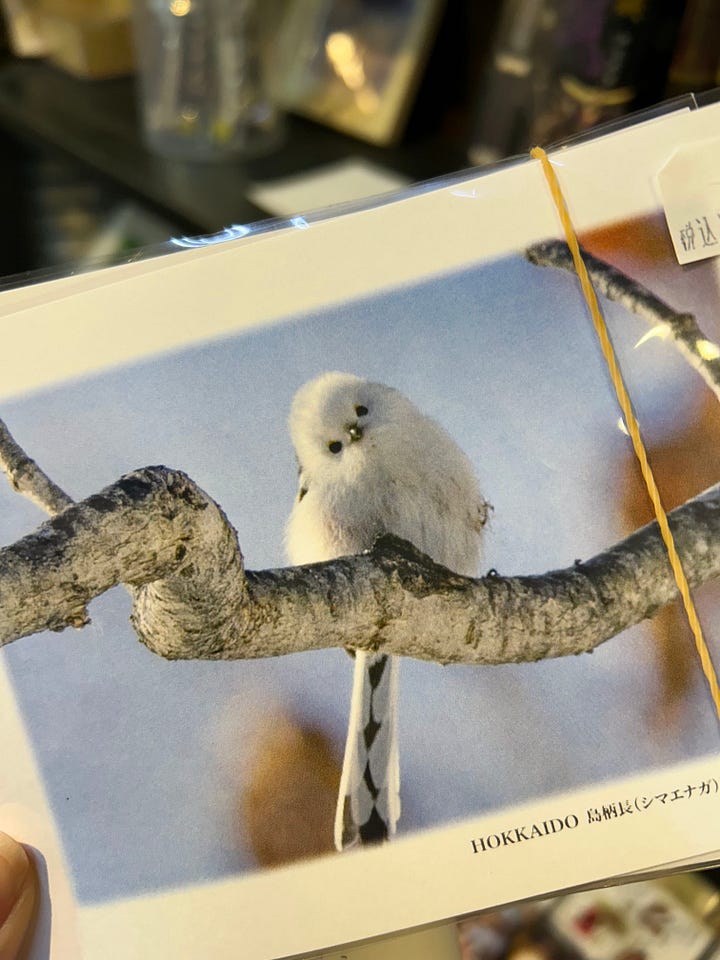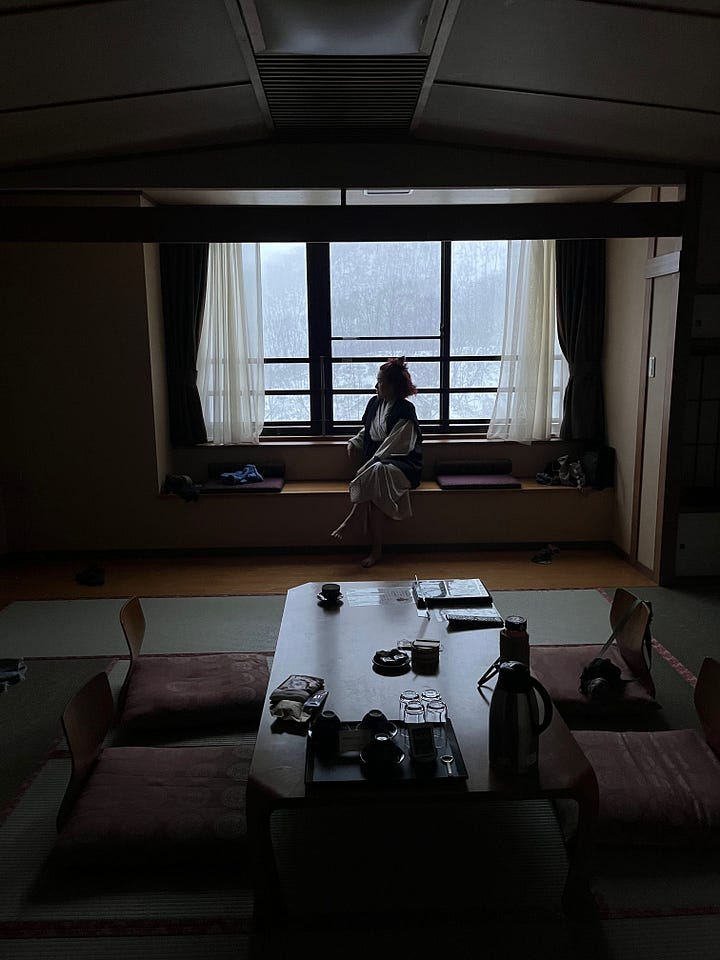The Fairy Bird is the Bald Eagle of Hokkaido
Noboribetsu, Hokkaido is a place where a snow storm could happen at any moment, and you can search desperately for a mythical bird and find bears instead.
Traveling to Noboribetsu
First of all, I have to shout out my friend, Diana, for putting Hokkaido in the winter on the map for me in the first place. I would never have thought to come here if it wasn’t for her.
Our lodgings in Noboribetsu required us to arrive before 8PM, and it was going to be quite a journey from Sapporo. In the mid afternoon, we packed our bags and took a taxi to Sapporo station where we caught a train to Noboribetsu, which was about 2 hours. Once we arrived at Noboribetsu station, the visitor center was closed, so all of us passengers stood with our luggage outside in the snow waiting for the bus for 25 min. The main group of people were Chinese tourists who seemed to be there for snowboarding.
When we had scrounged up enough cash to pay our bus fare, we boarded the bus to the main touristy area of Noboribetsu where the onsens are located and most of the hotels. By then, it was nightfall, and we dragged our luggage through sandy slush for 15 minutes into a more secluded part of an already small secluded town to the Oyado Kiyomizuya: a traditional style Japanese hotel where they cleaned the wheels of our luggage, had us take off our shoes immediately at the check-in counter, and gave us slippers.
A note on cash, because I had the impression of Japan as futuristic, I expected it to be a cashless place. However, Japan was innovative and futuristic in the 80s, but now many parts feel dated and worn compared to Korea, Taiwan, and China. These places adapted the innovations of Japan and built it newer and faster. I saw this architecturally and when it came to payment options. We needed cash for some transportation like the bus (pre SUICA), and for dining unless it was a chain restaurant.
Because there were two of us staying in what we came to gather was likely their best honeymoon suite, they had assumed it would be a man and a woman and prepared yukatas, Japanese traditional clothes, for a man and a woman, which mostly means they were in slightly different sizes and colors. The hotel clerk had to switch the yukatas out when he took us up to our rooms and gave us a tour.
Here’s what our traditional room looked like both before they made our tatami beds and afterwards.
[Video Description: A hotel room with a living room area with two arm chairs and a coffee table with a large window on the left. On the right is a tatami room with a short table and floor chairs that then converts to two beds set up on the tatami mats.]
Growing up, my grandmother’s house in the middle of Worcester, Massachusetts had a basement where she had built a tatami area. Visiting her in the summers, we would sleep there while her tiny TV played Taiwanese news. During family gatherings, my cousins and I would take all the mats and blankets out of the built in shelves and jump into our blanket mountain shouting “GERONIMO!” from the top of the now empty shelves.
Sleeping the first night in our traditional Japanese room on the tatami, I was brought back to my childhood and reconnected to my Amah in my dreams.
On the first floor of the hotel, there were split gender onsens where you could shower and soak in the hotel spring waters. There didn’t seem to be that many guests, so when I went down to soak, I ran into 1-2 women while in the onsen.
The reason I chose Noboribetsu as a place to visit was because it was an onsen town and had natural hot springs. I love to scald myself in the sulfuric waters that relax my muscles and lull me drowsy.
Late Night Hot Pot, Morning Sub, and Afternoon Ramen




After dropping off our stuff in the honeymoon suite, it was about 8:30PM, and we were hungry! Noboribetsu has one Main Street that has souvenir shops, restaurants, and pharmacies.
Most of the restaurants were either closed or no longer taking customers except for Nobojin, a yakiniku or Japanese bbq restaurant. The wagyu was the star of the show at this restaurant, and we were grateful to have a place to eat on our first night.
When the miso soup arrived with the unagi don, it didn’t come with a spoon, so I used my friend’s spoon that came with her dish. It wasn’t until this happened one more time that I realized, in Japan, we’re expected to drink the soup directly from the bowl rather than use a spoon like in Japanese restaurants in the U.S.
For breakfast, we went to Adex Bakery & Cafe because my friend needed her morning coffee fix, and because I thought this was our brunch for the day, I got the hoagie shown above. It was a beef pastrami sandwich with wasabi mayo that was decent. I’m not sure if you can tell from the photo, but the sub was definitely not a foot long like we’re used to in the U.S., so after we left the coffee shop, we spontaneously decided to grab some ramen at 味自慢 since there wasn’t a line.
Since there are many tourists and only a few restaurants, we were quickly realizing that to be early was to eat. The ramen pictured above was their tan tan spicy ramen, and soon after we were seated, a couple other tables filled up. Suddenly, the restaurant owner went to the front door and put up a sign that they were full and closed. First of all, the restaurant was 80% at capacity with at least two tables completely empty, and second of all, the last time we saw this sign, we thought they were closed for the rest of the day. Not the case! They put up this sign until they were under 80% capacity again.
The ramen was magnificent, and I have been ruined by Japanese ramen in Japan and Taiwan that I don’t know if I can have ramen again with contentment in the U.S. ever again. I’m such a snob!
Lastly, we need to talk about this bird: the Shima Enaga, Japanese Snow Fairy. In every shop that we walked into, the Shima Enaga was the star of the shop. From keychains to wood carvings to stuffed animals to chopsticks, they put this bird on every single thing they could think of, and for good reason. It is SO CUTE.
I wanted to buy every single thing with this bird on it, but in order to have self control, I made a pact that I could only buy Shima Enaga paraphernalia if I saw the bird in the wild on this trip in Hokkaido.
Did we see the bird?
No, of course not! Not for a lack of looking either as we stood in the snowy woods searching with our naked eyes for these easily snow camouflaged birds. There were definitely times we THOUGHT we saw the bird, but in the end, I think it was a delirious fantasy.
How I came to reconcile it was that in America, the bald eagle is a symbol more than a common sight for the country. Similarly, the Shima Enaga, is the bald eagle of Hokkaido. A beautiful symbol and a rare sight.
Noboribetsu Bear Park





After our second brunch of ramen, we walked over to the gondola that would take us up to Bear Park. Each gondola had a giant teddy bear in it to ride with, and we had a grand time catching the views while posing with this cute teddy. When we arrived at the park, we were able to see REAL bears, who were extremely food oriented and bossy. There were small vending machines to buy bear snacks that you could throw down and feed the bears in their habitat. The one bear pictured above was so funny because they were lazily enjoying themselves and only wanted you to throw the snacks directly into their mouth and would roll with their mouth wide open to try to scarf down the snacks that missed their mouth without using their hands or feet.
In the bear museum that displayed the history of bears in Hokkaido and the partnership between the Indigenous peoples of Hokkaido with the bears, there was a lookout to Lake Kuttara, which was jaw droppingly beautiful. The crater lake reminded me of Your Name, the animated film by Makoto Shinkai, which made it even more nostalgic and dreamy.
While it was fun to see the bears and ride the gondola up to the park, it was definitely a place centered around children and families, so keep that in mind if you ever want to visit.
When we arrived back at the hotel, the snow was slowly falling, and we changed back into our yukatas to head to the onsen before dinner. Each day, there were certain hours that the onsen was open to the public as well as to men vs. women. Therefore, when you’re planning your stay, make sure you stay at least two days to experience each onsen.
While doing research for dinner, there seemed to be two vastly different price options. There were hotel restaurants that had fancy set menu dinners starting at 10,000 yen (~$68) or ramen yakiniku restaurants where we spent around 1,000-2,000 yen total (~$6-13). For our time in Noboribetsu, we stuck to the less expensive restaurants, so for dinner, we decided to go to Isekura, which says it’s a ramen restaurant. However, their pictures feature traditional yakiniku where you grill over charcoal.
In the picture above of our dinner, you can see this small glass bowl of a raw looking egg with scallions in it. We ordered an onsen egg thinking that we would get the Korean version, which is a hard boiled carmelized egg from being boiled in the dry saunas. Instead, it was a very raw egg that tasted slightly more sulfuric than normal.
We ordered Capelins, which are fish common in Hokkaido to grill along with some more Wagyu and marinated pork. All of this was delicious along with some karaage, Japanese friend chicken, that was tender, lemony, and crispy. Warmed by our delicious meal and smelling of campfire, we strolled along the Main Street before returning to our tatami for the night.




